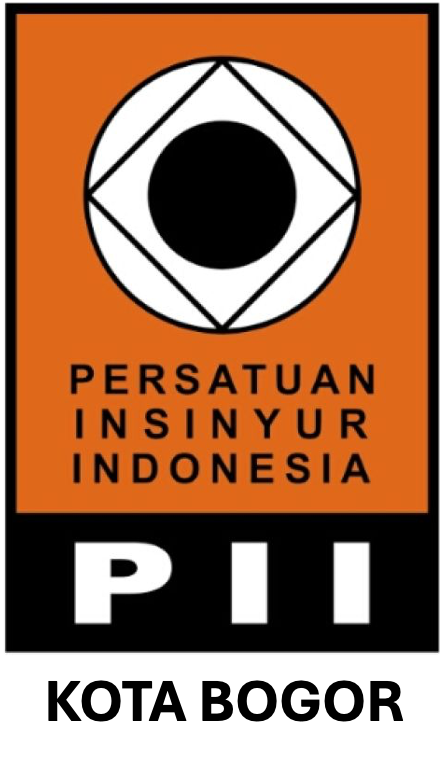Analisis Tingkat Risiko Penyebab Rel Patah pada Jalur Kereta Api Wilayah Divre IV Tanjung Karang
Abstract
The increase in the volume of passengers and goods in rail transportation in Indonesia has an impact on the condition of railway infrastructure, especially railway infrastructure. The main focus of this condition is the risk of rail damage, especially broken rails. So a holistic assessment approach is needed to identify the root causes and formulate appropriate treatment and improvement strategies. The aim of the research is to identify the factors causing the rail to break and analyze the causes. This research uses a risk level value analysis method by multiplying the results of probability and impact, thus producing a risk value. Risk variables such as extreme rain events, expansion in the alignment area, and mud pumping are high level risks. This is followed by medium, low and very low risks, according to the classification of each risk variable analyzed. Therefore, the priority scale for handling broken rail repairs is grouped based on the risk level value starting from the highest risk to the lowest risk. The conclusion is that risk variables such as extreme rain produce a risk value of IDR 296,881,200 with a probability value of 0.99% and an impact of IDR 29,988,000,000, expansion in the straight area produces a risk value of IDR 376,992,000 with a probability value of 1.10% and impact IDR 34,272,000,000, and mud pumping produces a risk value of IDR 394,128,000 with a probability value of 1.15% and impact IDR 34,272,000,000, these three risk variables are classified as high risk.
Downloads
References
2. Wang C, Wang L, Chen H, Yang Y, Li Y. Fault Diagnosis of Train Network Control Management System Based on Dynamic Fault Tree and Bayesian Network. IEEE Access. 2021;9:2618–32.
3. Rahayu T, A A. Sistem Pemeliharaan Rel Kereta Api Koridor Palang Parasamia - Jembatan Sei Piring. J Vor. 2021;2(2):100–4.
4. Cahyaningrum AE, Leliana A. Kajian Anjlokan Kereta Api Pada Lintas Rangkasbitung-Tanah Abang Berdasarkan Track Quality Index (TQI). J Sustain Civ Eng. 2023;5(02):134–43.
5. Beltiukov V, Shehtman E, Malikov O. Evaluation of Effectiveness of Separating Layers in Railroad Track Structure Using Life Cycle Cost Analysis. Procedia Eng [Internet]. 2017;189(May):695–701. Available from: http://dx.doi.org/10.1016/j.proeng.2017.05.110
6. Karpuschenko N, Trukhanov P. Estimation of the life cycle cost of the upper railway track structure. MATEC Web Conf. 2018;216:1–8.
7. Yolanda M, Ekawati Y, Noya S. Penerapan Metode Fault Tree Analysis Untuk Mencegah Kegagalan Pada Departemen Interior di PT X. J Sains dan Apl Keilmuan Tek Ind. 2023;3(1):49–58.
8. Correia dos Santos N, Colaço A, Soares P, Castanheira-Pinto A, Alves Costa P, Kaynia AM. Dynamic amplification of rail tracks in high-speed lines: Exploring train effects and impact of ground treatment. Transp Geotech [Internet]. 2024;48(June):101294. Available from: https://doi.org/10.1016/j.trgeo.2024.101294
9. Sandru A, Kujala P, Visala A. Horizon detection and tracking in sea-ice conditions using machine vision. IFAC-PapersOnLine [Internet]. 2023;56(2):6724–30. Available from: https://doi.org/10.1016/j.ifacol.2023.10.377
10. Vitásek S, Měšťanová D. Life Cycle Cost of a Railroad Switch. Procedia Eng. 2017;196(June):646–52.
11. Beckert P, Pareschi G, Ehwald J, Sacchi R, Bauer C. Jou rna. Resour Environ Sustain [Internet]. 2024;100162. Available from: https://doi.org/10.1016/j.resenv.2024.100162
12. Yao D, García de Soto B. Enhancing cyber risk identification in the construction industry using language models. Autom Constr [Internet]. 2024;165(June):105565. Available from: https://doi.org/10.1016/j.autcon.2024.105565
13. Hussain K, Sun H, Ahmad N, Iqbal M. Assessment of risk factors to Green, Lean, Six Sigma adoption in construction sector: Integrated ISM-MICMAC approach. Heliyon [Internet]. 2024;10(12):e32749. Available from: https://doi.org/10.1016/j.heliyon.2024.e32749
14. Kim ES, Lee DK, Choi J. Evaluating the effectiveness of mitigation measures in environmental impact assessments: A comprehensive review of development projects in Korea. Heliyon [Internet]. 2024;10(11):e31647. Available from: https://doi.org/10.1016/j.heliyon.2024.e31647
15. Sharma SB, Lee JT, Callaway DS. Distributed battery dispatch for uncertainty mitigation in renewable microgrids. Electr Power Syst Res [Internet]. 2024;235(June):110671. Available from: https://doi.org/10.1016/j.epsr.2024.110671
Copyright (c) 2024 Jurnal Teknik Sipil dan Lingkungan

This work is licensed under a Creative Commons Attribution-NonCommercial-NoDerivatives 4.0 International License.
Authors who publish with Jurnal Teknik Sipil dan Lingkungan, JSIL agree to the following terms:
a. Authors retain copyright and grant the journal right of first publication with the work simultaneously licensed under a Creative Commons Attribution License that allows others to share the work with an acknowledgment of the work's authorship and initial publication in this journal.
b. Authors are able to enter into separate, additional contractual arrangements for the non-exclusive distribution of the journal's published version of the work (e.g., post it to an institutional repository or publish it in a book), with an acknowledgment of its initial publication in this journal.
c. Authors are permitted and encouraged to post their work online (e.g., in institutional repositories or on their website) prior to and during the submission process, as it can lead to productive exchanges, as well as earlier and greater citation of published work (See The Effect of Open Access).











